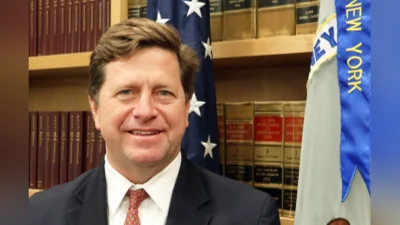The Congressional Record is a unique source of public documentation. It started in 1873, documenting nearly all the major and minor policies being discussed and debated.
“INTRODUCING THE ENSURING WORKER SAFETY ACT” mentioning the U.S. Dept of Labor was published in the Extensions of Remarks section on pages E183 on Feb. 9, 2011.
The publication is reproduced in full below:
INTRODUCING THE ENSURING WORKER SAFETY ACT
______
HON. MAZIE K. HIRONO
of hawaii
in the house of representatives
Wednesday, February 9, 2011
Ms. HIRONO. Mr. Speaker, today I introduce the Ensuring Worker Safety Act as a means to help keep workers safe in Hawaii and across the country.
In September of 2010, the U.S. Department of Labor (DOL) found that under former Governor Linda Lingle, Hawaii had under-funded and systematically neglected its State Occupational Safety and Health Act plan (OSHA State plan). As a result, Hawaii did not have enough workplace inspections or on-site consultations to keep workers safe. Hawaii was the only State in the nation found breaking its State plan obligations.
Unfortunately, for Hawaii and the 27 States/territories with approved State plans, DOL is extremely limited in its authority to help State plans improve. If DOL determines that an approved State plan is not
``at least as effective as'' Federal standards and enforcement, its only recourse is to terminate the State plan, a drastic step that would remove State control, leave State and local government employees unprotected, and add costs to DOL for funding and running a health and safety program in the State.
To help States respond to this challenge, today I introduce the Ensuring Worker Safety Act, which would give Federal DOL options other than completely terminating an underperforming State plan.
Specifically, the Ensuring Worker Safety Act:
Establishes a formal mechanism for OSHA to identify a problem with a State plan and compel a remedy without beginning the process for withdrawing approval.
Ensures continued application of health and safety regulations by providing OSHA with concurrent enforcement authority while a State plan is remedying deficiencies or being withdrawn, after 30 days notice of official Federal action and an opportunity for a public hearing.
Holds Federal OSHA accountable for providing strong oversight and guidance to State plans by establishing a regular Government Accountability Office (GAO) study--one every five years--to look at the effectiveness of State plans and the Secretary of Labor's oversight of such plans.
For her work on this bill in the 111th Congress, I thank my former colleague Congresswoman Dina Titus of Nevada. I look forward to her continued contributions to public service.
____________________








